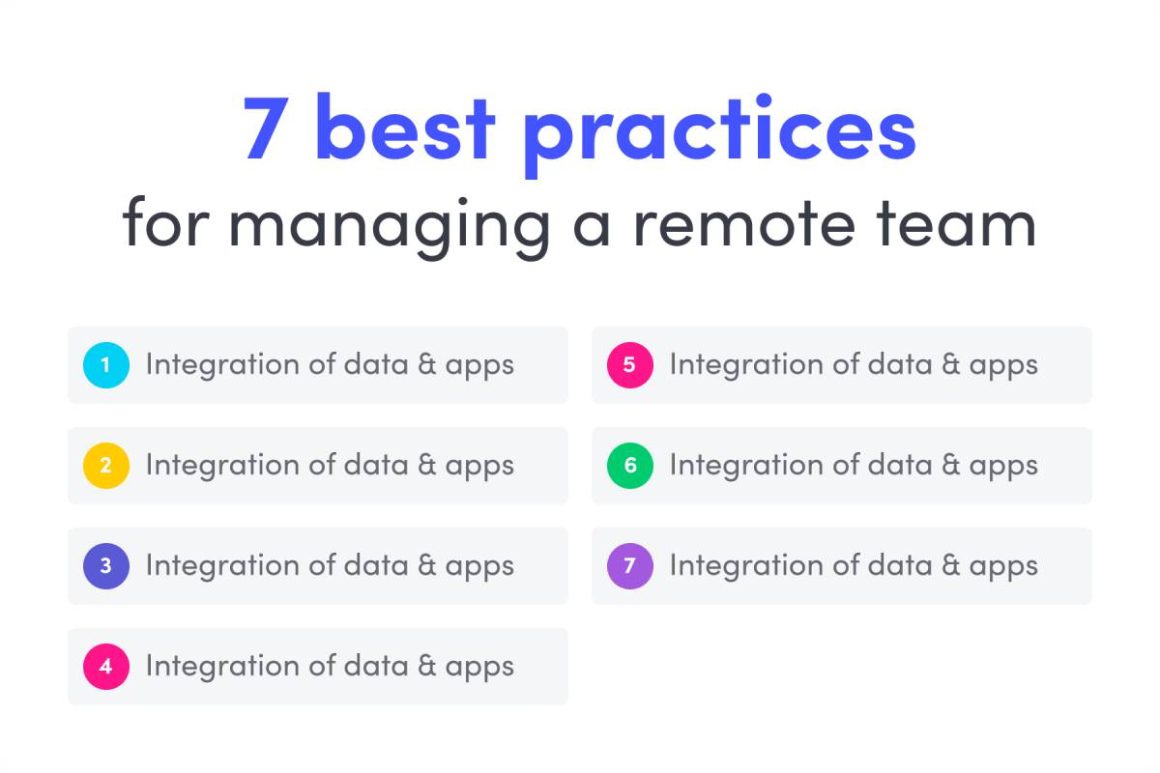7 Ways You Can Manage Your Remote Team More Effectively As remote work continues to rise, managers face the daunting task of assisting employees who have never physically met and live in different areas. It’s a group of individuals who play vital roles and offer a lot of talent but remain at a distance.
There are a lot of potential issues that could arise, so leads must learn quickly how to manage this environment and build a team of employees who work cohesively and productively. From knowing the Zoom background requirements to understanding communication issues, managers must juggle a lot. The following are seven tips for bringing your crew together and getting the most out of them.
Table of Contents
1. Understand Common Teleworking Obstacles
Although remote work has many benefits, it also has its downfalls. People may feel isolated and struggle with technology or connection speeds. In addition, they must learn to focus on work and not the kids or housework. Managers should be aware of these problems and provide tips on overcoming the challenges.
2. Identifying and Providing the Right Tools
In the office, managers can assess and discuss what people need. Do they require additional paper? Is some form of support going to bolster production? Use this same mentality with remote workers.
They need tools like Google Meet background images to foster their work environment in their home and hide all of the personal images that detract in meetings. Research what items help create a professional environment and allow for better task completion. Supply them, employees.
3. Make Time To Catch Up
While remote work allows for personal quiet work time, it also lacks the office hub for socialization or check-ins. You can’t hop over to someone’s desk to find out if they’re struggling or listen to an excellent idea. Instead, leads must arrange regular meetings to discuss work progress and mental health.
4. Establish Clear Communication Guidelines
Since managers can’t just walk out to the room or call people into a physical conference room, the company must have clear communication guidelines for how people should get and give information or updates.
Provide specifics about chat rooms and conferencing tools you expect people to use. Note the chain of command and who to email with concerns or questions. Don’t leave employees questioning who they should call.
5. Set a Professional Tone and Expectations
Model onscreen how you want others to behave. Choose an appropriate background. Talk to others and remain pleasant. Stay firm with deadlines and tell others who you expect them to use their time at home for work.
6. Build Relationships
Effective teams work with each other, enhancing ideas. This connection requires collaboration and trust from getting to know talents and personalities. Therefore, carve out time for people to learn about each other, their experiences, skills and personal lives.
7. Create Solid, Well-Balanced Teams
Ensure that your teams get along and that they can use their knowledge to better production. Friction is problematic, so avoid conflicting attitudes or competing mentalities. Divide up jobs on the team so that people have responsibilities that play into their strong suits.
Remote workers need managers to bolster their team’s connections. Help them learn to be the best players at home, work with custom Zoom background and communicate clearly.


